Writers@Work: An Interview with Children’s Book Author Sandy Brehl
September 5, 2017
Note From Rochelle
Dear Readers,
It’s official—we’ve celebrated Labor Day and sent the kids back to school—it’s time to focus on our writing! Woot!
Today I’m delighted to welcome author Sandy Brehl to the blog to talk about her new book, Mari’s Hope, as well as the tools and practices that have made her a successful writer. And if you’d like to meet her in person, she’ll be appearing at Boswell Book Company on Thursday, September 14 at 7:00 PM. http://www.boswellbooks.com/upcoming-events
Enjoy!
Rochelle
Writers@Work:
Interview with Children’s Book Author Sandy Brehl
Welcome to the blog! I’m glad to have you back and excited about your new book. Can you tell us a bit about this third installment in your series?
Thanks so much for your invitation to return, Rochelle. It’s a privilege to join you and your readers.
My original book, Odin’s Promise, was written as a stand-alone title. Its story spanned the 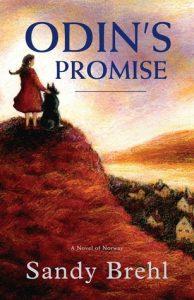 first year of the German occupation of Norway in 1940-41 and introduced spontaneous local resistance efforts. I quickly heard from readers who insisted on knowing more about young Mari, her family, her village, and Norway during the four remaining years of occupation. Reader enthusiasm is a delightful problem to have, isn’t it? I dove back into research and then got busy writing.
first year of the German occupation of Norway in 1940-41 and introduced spontaneous local resistance efforts. I quickly heard from readers who insisted on knowing more about young Mari, her family, her village, and Norway during the four remaining years of occupation. Reader enthusiasm is a delightful problem to have, isn’t it? I dove back into research and then got busy writing.
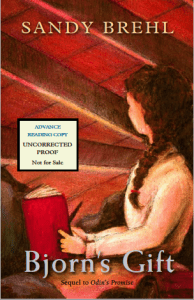 Research revealed that both the history and the character required more storytelling than could be written within a single book. In Bjorn’s Gift, the middle book in a trilogy, harsh and suddenly changing conditions complicated Mari’s efforts to navigate typical early-teen confusions and emotions. Mari’s Hope concludes the trilogy in the final years of World War II. Mari assumes adult-like roles, assisting the village doctor and participating in riskier resistance activities. Dangers from a snooping German soldier and mixed messages from a former school friend test her judgment and trust.
Research revealed that both the history and the character required more storytelling than could be written within a single book. In Bjorn’s Gift, the middle book in a trilogy, harsh and suddenly changing conditions complicated Mari’s efforts to navigate typical early-teen confusions and emotions. Mari’s Hope concludes the trilogy in the final years of World War II. Mari assumes adult-like roles, assisting the village doctor and participating in riskier resistance activities. Dangers from a snooping German soldier and mixed messages from a former school friend test her judgment and trust.
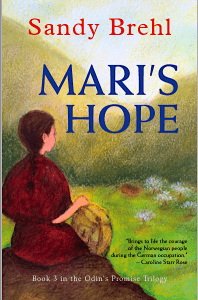 Among my writing challenges in this final book was the need to tread a fine line between depicting historic dangers facing a teen girl during the occupation and keeping the events and emotions appropriate and accessible for younger readers. At various appearances I met Norwegians who lived during the occupation. They shared dramatic and heartfelt stories. Rather than rely on extreme historic details to amp up tension, I used those authentic stories to enrich characters and scenes to pull in readers. I also considered the questions and concerns of earlier readers, writing a story that should satisfy without becoming too “neat,” because the consequences of war are never neat.
Among my writing challenges in this final book was the need to tread a fine line between depicting historic dangers facing a teen girl during the occupation and keeping the events and emotions appropriate and accessible for younger readers. At various appearances I met Norwegians who lived during the occupation. They shared dramatic and heartfelt stories. Rather than rely on extreme historic details to amp up tension, I used those authentic stories to enrich characters and scenes to pull in readers. I also considered the questions and concerns of earlier readers, writing a story that should satisfy without becoming too “neat,” because the consequences of war are never neat.
You do workshops for educators and librarians on using picture books in multiple ways. Can you provide some examples of that? How has this work influenced your writing?
The workshops emerged from my teaching career. To get the right book into the hands of the right child meant using PICTURE BOOKS! Picture books are COMPLETE-CONCISE-COMPELLING, whether fiction or nonfiction, prose or poetry. My workshops demonstrate and explore such books for any age, interest, or purpose, each with the ability to spark learning and develop a love of reading and writing.
Picture books do that for me as a writer. There is not a topic you can name, nor a story arc you can spin, nor a theme you can suggest for which I can’t, in turn, suggest outstanding picture books. Each presents a model of excellence in structure, pacing, character, clarity, and impact. Each is a mini-master class in voice, style, and purpose, in word choice and wisdom. They inspire me and guide me in making each word, each line, each page-turn matter.
I know you also write picture books. How has the practice of writing for young readers affected your writing for older kids?
I’ve heard many authors say they write for themselves, not for kids. In other words they don’t write “down” to kids. I agree with that premise, but I feel strongly that target ages DO affect my choices in what and how I write. I write to satisfy myself, to put ideas on paper in ways that please me, but I find I always have a “reader” at my side. It’s someone of the intended age, someone who will jab a bony elbow in my ribs if I begin to lose track of who should love the story. My critique partners are priceless, too, often pointing out passages in which I am sounding “too much like a teacher.” The biggest difference (other than word count) between writing picture books and non-illustrated text is that the words must (and should) do only half the work in picture books, but all the work in the other.
Can you share a bit about your writing practice? When, where, and how do you write?
Since I retired I’m at the keyboard many hours each day. I have a picture book blog and contribute to a blog about historical books for middle grade readers. I’m in several critique groups and do volunteer work with organizations. I spend a huge chunk of my keyboard time on things other than creative writing.
I work best when thing are quiet and undisturbed, but when I’m working on a particular creative project, whether picture book or lengthy text, I can ignore all of that busy-ness for days at a time until I reach a natural stopping point. Then I set it aside and catch up on postponed work. When I return to the project with fresh eyes, the cycle resumes. And when there is a deadline to meet, I meet it, whatever that takes.
I have a bad back, so I use a laptop and move often, shifting among several chairs that each provide good support. Picture book ideas and first drafts are handwritten, and I often jot down “big picture” ideas for longer text by hand. Eventually, though, I end up on the keyboard.
No writing practice should be described without mentioning how much I read-hours each day. When I notice fine qualities in the writing, I read it twice, or more-first for the joy of the read, then again to analyze and annotate the writing. I want to know how the author gave me that joy.
Do you have a final tip you’d like to leave with our readers?
First, I share this with students of any age. It goes back to keeping that child-at-my-side while writing: WRITE like a READER, and READ like a WRITER.
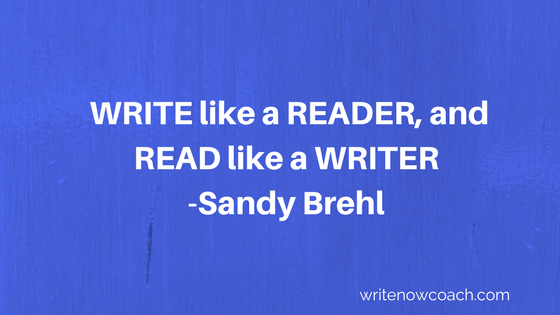
Equally important, become an active member in a professional writing group that supports the types of things you are writing. For anyone writing for ages birth-to-twenty, that would be SCBWI: Society of Children’s Book Writers and Illustrators. Despite years of serious effort to learn everything I could about writing, my learning curve went through the roof once I joined SCBWI. That’s how I first met you, Rochelle, and became aware of your invaluable blog. Thank you for inviting me to join you here. It’s been delightful!
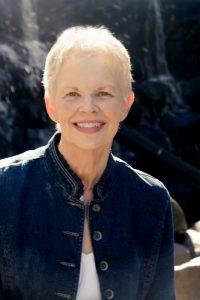 About the author. Sandy Brehl (www.SandyBrehl.com) is the award-winning author of a Norway historical trilogy for ages ten-thru-adult. (ODIN’S PROMISE, BJORN’S GIFT, and MARI’S HOPE) She also writes a blog about picture books and contributes to a blog about historical works for middle grade readers. She’s an active member and volunteer in SCBWI-Wisconsin. Sandy writes fiction, nonfiction, and poetry for young readers of any age. A retired educator living in the Milwaukee area, Sandy offers programs for schools, libraries, and adult groups. Learn more at www.SandyBrehl.com, follow on Twitter @SandyBrehl and @PBWorkshop, and on Facebook: Sandy Brehl Author.
About the author. Sandy Brehl (www.SandyBrehl.com) is the award-winning author of a Norway historical trilogy for ages ten-thru-adult. (ODIN’S PROMISE, BJORN’S GIFT, and MARI’S HOPE) She also writes a blog about picture books and contributes to a blog about historical works for middle grade readers. She’s an active member and volunteer in SCBWI-Wisconsin. Sandy writes fiction, nonfiction, and poetry for young readers of any age. A retired educator living in the Milwaukee area, Sandy offers programs for schools, libraries, and adult groups. Learn more at www.SandyBrehl.com, follow on Twitter @SandyBrehl and @PBWorkshop, and on Facebook: Sandy Brehl Author.

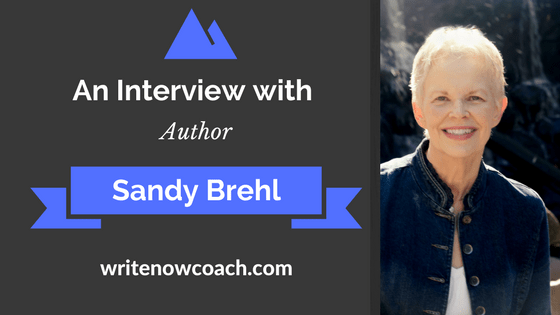








A wonderful article about a wonderful woman, who just happens to be my sister. The fun part of reading these posts about her is that I get to learn more about her each time. Thank you!
Denise, it’s fun to see you comment here! Maybe we should talk more often!
Sandy is not only a talented writer, she is a generous SCBWI member who has contributed greatly to the organization.
Best wishes for the trilogy and the latest publication, MARI’S HOPE.
Thank you, Amy! The same is true of your talent and generosity. Thanks for the good wishes.
Congratulations, Sandy, on your latest book! How exciting to have written a trilogy.
Thank you, Kathy! It really is exciting!
Thanks for the wonderful interview with an amazing writer, who shares so much not only with readers but other writers.
Janet, you’ve always been such a strong example of how writers support other writers. Your kind comments mean the world to me.
Great interview! Good questions and great information! I like Sandy’s description of writing all over the house. I also appreciated the links at the bottom as it took me to Sandy’s blog and I stoled her Mr. Rogers quote to send to my kids for the grandkids! Thanks
Patty,
Happy to lead you to Mr.Rogers. I really miss that man, but his powerful and simple words stay with us forever. Words can do that!